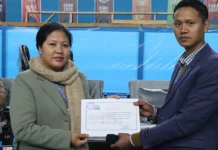[ Suresh Mohanty ]
India’s foreign policy has often been accused of being reactive, indecisive, and conflicting, vacillating between the West and anti-West (not non-West as External Affairs Minister Subrahmanyam Jaishankar pointed out recently) and being in a state of constant flux – at least of late. Protagonists, however, argue that it is issue-based, consistent and transactional, in keeping with national aspirations and external environment. Foreign policy by nature must adapt itself to dynamism brought about by shifting global power dynamics, external environment and evolving contemporary challenges. Even economically and militarily superior nations have suffered foreign policy reverses. Take the case of the US in Afghanistan and China in installing a puppet communist government in Nepal. Frequent reappraisal based on developing situation is imperative to remain ahead of the curve, especially in the prevailing geo-economic and geo-strategic environment. India’s neighbourhood has been constantly in economic and political turmoil, lending itself vulnerable to strategic influence/intervention by regional and global powers not necessarily favourable to India. There is no gainsaying that India has not only to be conscious of this development but also envisage such shifting realignments/priorities to make nuanced and flexible adjustments to vexatious economic and security ramifications.
The recent developments in Nepal, with the ruling coalition transiting from Nepali Congress led by Sher Bahadur Deuba and Communist Party of Nepal – Maoist Centre (CPN-MC) led by Pushpa Kumar Dahal aka Prachanda, to hitherto an excruciating alliance CPN-Unified Marxist Leninist (UML) led by KP Sharma Oli and CPN-MC (along with two other left leaning parties), is a tenuous political development to India’s discomfiture. The Nepali Congress, which was jettisoned by Prachanda over economic intransigence, and support for Ram Chandra Poudel as president, has traditionally been a pro-India party which governed Nepal for a considerable period since the 1950s. Interestingly, the unification of the communist parties is what the Chinese Ambassador Chen Song had agonisingly failed to achieve prior to the coalition between Nepali Congress and CPN-MC. It was during the tenure of KP Sharma Oli as prime minister and a strident anti-India crusader that Nepal brazenly promulgated its new political map, including the areas of Lipiyadhura, Lipulekh and Kalapani as parts of its territory in May 2020. Disenchanted with the perpetual political turmoil affecting development and economic downturn, mass protests in favour of reversion to monarchy were witnessed in Kathmandu last month. “Come back king, save the country,” the crowd chanted in favour of King Gyanendra, who had ironically seized absolute power in 2005.
These developments come close on the heels of a particularly sustained anti-India movement led by President Muizzu in the Maldives. Having won the election on the basis of an ‘India out’ campaign (meaning removal of all military personnel from the Maldives), it has followed up with abandoning the long-established norm of India being the first port of call for any newly elected president of the Maldives and signing a defence pact with China for equipment and training. The Maldives has also embarked on procurement of drones from Turkiye for surveillance of its exclusive economic zone hitherto being undertaken with assistance from India.
As a doomsday prediction, Bhutan may well be agonisingly close to a border deal with China, shedding control over the strategic Doklam plateau at the India, China and Bhutan trijunction in the west, and Sakteng Wildlife Sanctuary in the east, in exchange for Jamparlung and Pasamlung valleys in the north, where China has already made confrontational encroachments and established xiaokang (well-off villages). These speculations and prognostications are not unfounded if viewed in the context of resumption of border negotiations between Bhutan and China in October 2023 (25th round), stalled since 2016, followed by ‘cooperation agreement’ signed by both countries and constitution of a joint technical team for three stage settlement of border disputes. Further, the Bhutanese prime minister in an interview to a newspaper mentioned about both countries “inching towards completion of a three step roadmap on boundary delineation.” There is growing unrest in Bhutan against their international isolation from global community. For those who read the tea leaves, there were some indications of this gradual shift in policy even during the 2017 Doklam standoff. While the 73 days face-off between Chinese and Indian forces commenced on 16 June, 2017 with the Chinese attempted to extend an existing road southwards up to Doklam plateau and Indian troops entering Doklam to stop the Chinese, the ambivalent Bhutan’s protest against the Chinese intrusions and violation of agreements in 1988 and 1998 came only on 29 June, 2017. India has been funding Bhutan’s five-year plans since 1961. The 13th five-year plan, which commences this year, has been assured Rs 5,000 crore aid during the interaction between the two prime ministers on 14 March, 2024. There has also been an assurance for economic stimulus package and infrastructure development proposals. How this robust and continued historical, traditional and cultural relationship will withstand Chinese coercion and territorial expansionism, detriment to India’s security interests remains to be seen.
India-friendly Sheikh Hasina has won her fourth consecutive term in Bangladesh, an election termed neither free nor fair by the US and boycotted by the main opposition Bangladesh Nationalist Party. Nearly 25,000 activists of the opposition parties were behind bars in the run-up to the elections. A group of political activists have launched an ‘India out’ campaign, accusing India of meddling in the internal affairs of Bangladesh, and called to boycott all Indian goods in Bangladesh and abroad. They allege India’s complicity in ensuring that Sheikh Hasina continues to remain in power, despite mass rigging, boycotts and democracy backsliding. Chinese involvement in infrastructure development and military cooperation continues unabated. Bangladesh, having joined the BRI in 2016, inaugurated the Chinese funded bridge over the Padma river in 2022. In 2016, Bangladesh procured two submarines from China and a submarine support facility is under construction along the southeastern coast (Cox Bazaar) under a $1.2 billion contract. Persistent irritants of the Teesta river water-sharing, illegal immigration and cattle smuggling have the potential to flare up and exploited by inimical elements within Bangladesh to destabilise the tenuous relationship.
Nearly two years before the US forces executed a messy and clumsy withdrawal from Afghanistan in August 2021 under a peace agreement with the same Taliban they were pitted against for nearly two decades, the late General Bipin Rawat had endorsed the option of dialogue with the Taliban without preconditions in January 2019. The writing was already on the wall with Pakistan, the US, Russia, Iran, China and the UAE negotiating with the Taliban. The latest outreach by External Affairs Joint Secretary JP Singh and his confabulations with the Taliban foreign minister on 8 March, 2024 on humanitarian assistance and Chabahar port was to further streamline the process of dialogue, even without formal recognition of the Taliban government. With the India-Middle East-Europe Economic corridor in a limbo due to the conflict in the Middle East, it only makes sense to expedite the much delayed connectivity to Afghanistan, central Asia and onwards to Europe through the Chabahar port. The growing unease escalating into transborder attacks between Afghanistan and Pakistan will only yield strategic leverage for India.
Relations with Pakistan will remain convoluted as long as the Army shapes its foreign and domestic policy and aspires to remain relevant and the dominant force in Pakistan. While its economic woes may have eroded its potential for mischief, it will continue to remain an irritant and an option with Pakistan to divert attention from multidimensional mismanagement at home as anti-India rhetoric continues to remain a unifying force in Pakistan.
India’s neighbourhood first policy will require constant and multidimensional reappraisal to keep it aligned to national security and economic interests. Being demographically, geographically and economically much bigger, our approach to the immediate neighbours ought to be more generous, non-reciprocal, mutually beneficial and patient. Concurrently, the neighbours must be made aware of the cumulative dangers of an anti-India narrative and self-defeating debt trap coming to haunt them in the bargain. While Bhutan must be acutely conscious of what has befallen Tibet (and Chinese not known to compromise on territorial gains), Bangladesh must be wary of what economic misery Sri Lanka had to undergo. (The contributor is a major general of the Indian Army)



